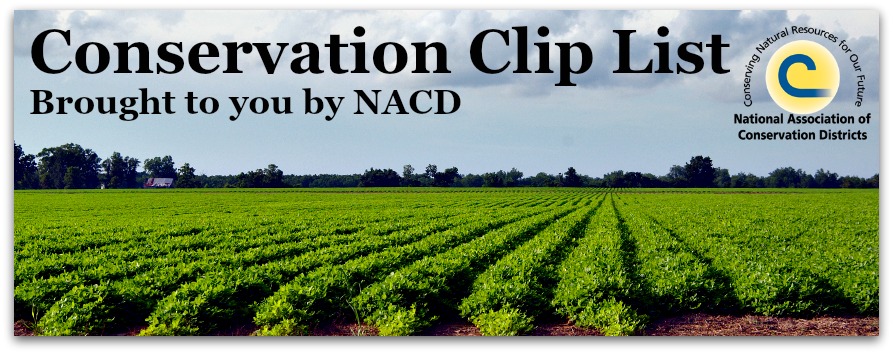
Conservation Clip List is a weekly collection of articles distributed by NACD that provides our members and partners with the latest news in what's driving conservation. If you have a relevant submission, please contact your NACD Communications Team.
Researchers explore the use of cover crops to control glyphosate-resistant Palmer amaranth via High Plains/Midwest Ag Journal
A new study featured in the most recent issue of Weed Technology shows cover crops can help to fight glyphosate-resistant Palmer amaranth—the most difficult of the glyphosate-resistant weeds to manage and a significant problem for U.S. cotton growers.
Who pays for $3 billion MR-GO wetlands restoration? via The Times-Picayune
Louisiana and the Army Corps of Engineers sparred before a three-judge panel of the 5th U.S. Circuit Court of Appeals on Tuesday (June 7) over whether the state should pay 35 percent of the almost $3 billion Corps plan to restore wetlands along the closed Mississippi River-Gulf Outlet. U.S. District Judge Lance Africk had concluded in August that the Corps must pay the full cost for the agency's improper construction and maintenance of the MR-GO, but the Justice Department asked the 5th Circuit to overturn his ruling.
Conservation districts helping farmers comply with buffer laws via The Daily Journal
Workers from the West Otter Tail County Soil and Water Conservation District planted seeds for native grasses and flowers Monday on 1.4 acres three miles west of Fergus Falls along the shore of Little Lake. It was part of an effort to assist farmers comply with county and state laws to protect water from pollutants and sediment runoff. It’s called the Otter Tail County Buffer Initiative.
Producer partner with local districts for certification via The Land
The process for the Minnesota Agricultural Water Quality Certification Program begins with contacting your local soil and water conservation district... A local SWCD will contact the area certification specialist who will then sit down with the producer and go through the production management practices field by field, crop by crop. The purpose is to identify where there might be opportunities to improve a practice.
Enhancing Food Crop Sustainability with Nanoparticles via Engineering.com
The global population is growing, and ensuring that there’s enough food to go around means finding better ways to grow crops. Phosphorus is a key nutrient for plant growth; it promotes root growth, hastens maturity and is important to the development of new tissues. That’s why it’s commonly used in fertilizers, which are being applied more and more as farmers increase [yields] for an increasing population.
Mimicking nature: cover crop guru Dave Brandt was an early adapter via Farm and Dairy
The fields that belong to central Ohio farmer David Brandt are easy to spot... It's called cover cropping — and the concept is nothing new. In fact, with all of today's concerns with water quality and nutrient loss, cover crops are arguably more popular now than ever before.
One way to get Big Agriculture to clean up its act via The Washington Post
(Opinion) This month, I set out to discover whether what we think of as "Big Ag" is cleaning up its act... What's interesting about these conservation practices is that they raise the possibility of constructive change in one of the most contentious issues in agriculture: government subsidies.
Purdue updates nitrogen guidelines for growers via AgProfessional
Using more than the recommended amount of nitrogen-based fertilizers on a corn field is a waste of money and could pose environmental risks, two Purdue Extension agronomists say in an updated report.